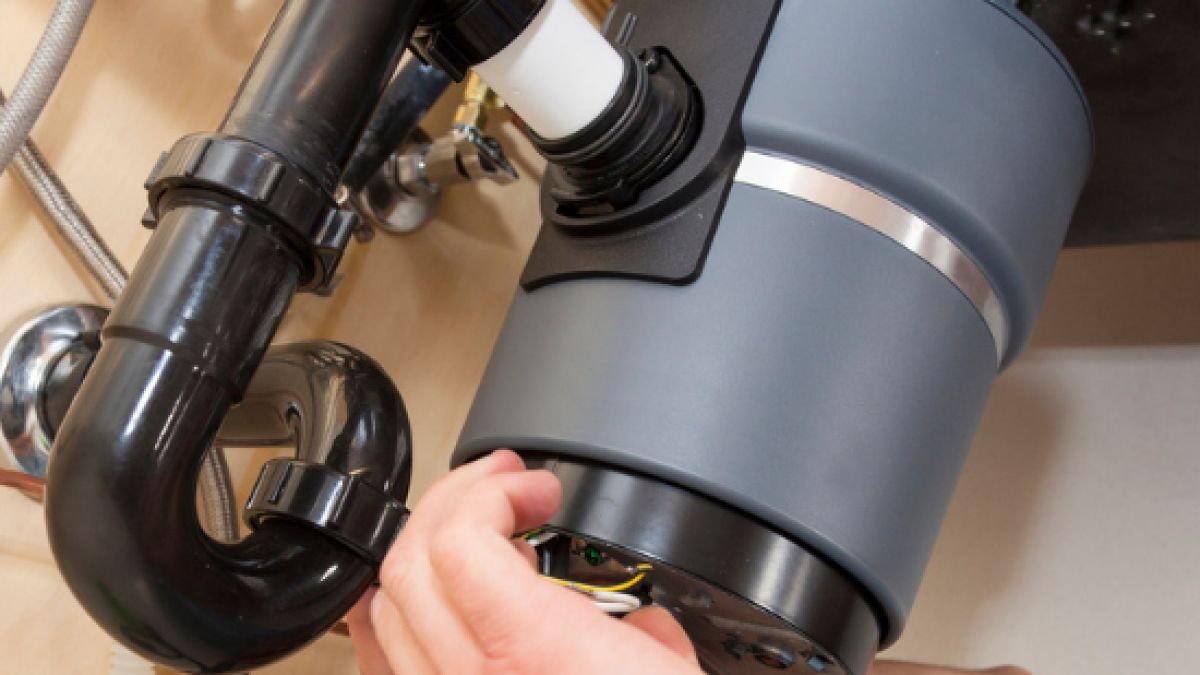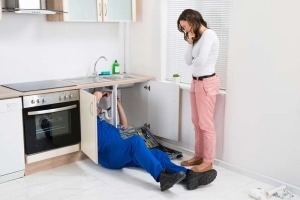Useful Techniques for Repairing a Dripping Garbage Disposal
Useful Techniques for Repairing a Dripping Garbage Disposal
Blog Article
Schedule Free Estimate
Are you on the lookout for tips on Tips on Fixing a Leaking Garbage Disposal?

Waste disposal unit are important cooking area devices that assist in disposing of food waste efficiently. Nevertheless, a leaking waste disposal unit can be a discouraging and unpleasant trouble to handle. The good news is, lots of leaks can be repaired easily with a few simple steps. In this write-up, we will certainly discuss how to take care of a leaking waste disposal unit effectively.
Intro
Waste disposal unit are set up under cooking area sinks and are created to shred food waste right into smaller pieces, permitting it to go through the pipes system easily. While these tools are generally reliable, leaks can occur with time as a result of wear and tear, loose connections, or damage to the device.
Step-by-Step Guide to Dealing With a Leaking Garbage Disposal
Switch off the Power
Prior to attempting any fixings, make certain that the power to the waste disposal unit unit is shut off to prevent the danger of electrical shock.
Locate the Leakage
Identify the specific area of the leak and establish the cause
Tighten Connections
Utilize a wrench to tighten up any kind of loose connections between the disposal system and the pipes system.
Change Seals or Gaskets
If the leakage is due to worn seals or gaskets, eliminate the old components and replace them with brand-new ones.
Patching Splits or Holes
For fractures or holes in the disposal system, usage epoxy or a suitable patching material to secure the broken area.
Identifying the Source of the Leak
Before attempting to take care of a leaking waste disposal unit, it is necessary to recognize the resource of the leakage. This can normally be done with aesthetic evaluation or by conducting simple tests.
Visual Examination
Evaluate the garbage disposal unit carefully for any kind of signs of water leakage. Pay attention to locations around seals, gaskets, and link points.
Checking for Leaks
One means to check for leakages is by running water via the disposal unit and checking for any noticeable indications of leak.
Common Reasons For Leaks in Waste Disposals
Worn Seals and Gaskets
Seals and gaskets play a vital function in avoiding water from leaking out of the garbage disposal. Gradually, these elements can weaken, causing leakages around the disposal device.
Loose Links
The connections between the waste disposal unit and the pipes system can come to be loose in time, causing water to leakage out throughout operation.
Fractures or Openings in the Disposal Device
Physical damage to the garbage disposal, such as cracks or openings in the real estate, can also result in leaks.
Devices and Products Needed for Dealing With a Leaking Garbage Disposal
Before beginning the repair procedure, gather the necessary devices and materials, consisting of a screwdriver, adjustable wrench, plumber's putty, substitute seals or gaskets, and epoxy or patching material for fixing cracks or holes.
Examining the Waste Disposal Unit After Repair
When the repair service is total, evaluate the waste disposal unit by running water with it to ensure that the leakage has been dealt with.
Preventive Upkeep Tips to Prevent Future Leakages
To avoid future leaks, it is essential to do regular upkeep on your waste disposal unit. This includes maintaining it tidy, staying clear of placing non-food things or hard items down the disposal, and occasionally checking for leakages or various other problems.
Verdict
To conclude, dealing with a leaking garbage disposal is a reasonably straightforward process that can be finished with basic tools and materials. By adhering to the steps outlined in this short article and exercising preventative maintenance, you can keep your garbage disposal in good working problem and avoid costly repair services in the future.
What to Do About a Leaking Garbage Disposal
A leaking garbage disposal often goes unnoticed until you confront a sopping cabinet, a foul-smelling puddle, or an audible drip-drip-drip from the unit. The fix can be frustrating, too, because the leak can stem from a number of components in the system. Fortunately, with a little sleuthing, you can zero in on the leak and—depending on the exact location—stop the icky oozing and repair the component that caused it. Worst case scenario, if it turns out that the garbage disposal must be replaced, installing a new one is a reasonable do-it-yourself task for those with basic plumbing skills. Read on to keep the cash you’d otherwise hand over to a pro.
Prepare to find the leak
Prior to testing the garbage disposal for leaks, unplug it at the wall outlet and turn off the power from the breaker box to prevent electrical shock. Then insert a watertight sink stopper into your sink drain and wipe the unit dry with a clean cloth. In any handy container, mix a few drops of food coloring into a few cups of water, and pour the dyed water onto the sink stopper to help you locate the leak.
Investigate the source
- the top, where the disposal meets the sink drain
- the side, where the dishwasher hose or main drain pipe connects to the disposal
- or the bottom of the unit
Inspect each of these locations while gliding a light-colored rag over the unit; the dyed water will readily show on the rag and reveal the location of the leak. If a leak isn’t immediately apparent, remove the sink stopper and pour a few more cups of dyed water down the sink drain, then check for leaks again. Leaks near the top of the unit are more likely to show themselves while the sink is plugged, while side and bottom leaks are more noticeable while the sink is unplugged.
The metal sink flange that sits directly inside the sink drain is typically sealed around the top with plumber’s putty (a clay-like sealant) and then secured from under the sink with bolts. If the plumber’s putty deteriorates, or the bolts loosen, the flange can no longer form a watertight seal between the sink drain and the disposal—which could cause a leak at the top of the unit.
To reseal the leaky flange, you must first detach the garbage disposal. Start by loosening the screws securing the main drain pipe to the disposal, then loosen the screws in the metal clamp securing the dishwasher hose to the disposal and detach the drain pipe and dishwasher hose from the disposal. Loosen the screws in the mounting ring that connects the disposal to the metal mounting assembly beneath the sink, then pull down the disposal and carefully set it on a clean, dry surface. Loosen the bolts in the mounting assembly with a wrench, then pull down the mounting assembly and set it near the disposal.
https://www.bobvila.com/articles/leaking-garbage-disposal/

Do you appreciate more info about Why Is My Garbage Disposal Leaking From the Bottom?? Give a remark directly below. We will be delighted to find out your thoughts about this blog post. We hope that you visit us again later on. Enjoyed reading our piece? Please share it. Let other people find it. Thank-you for your time spent reading it.
Additional Information Report this page